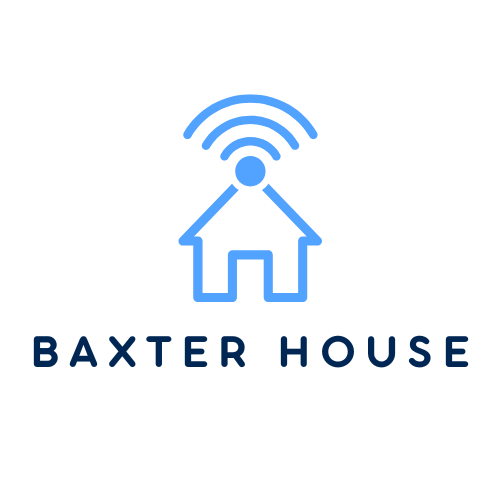In the heart of Silicon Valley, Palo Alto isn’t just a tech hub; it’s a real estate playground where trends shift faster than a developer can say “open floor plan.” With its picturesque streets and top-notch schools, it’s no wonder that everyone wants a piece of this golden pie. But what’s cooking in the Palo Alto real estate market?
Table of Contents
ToggleOverview of Palo Alto Real Estate Trends
Palo Alto’s real estate market remains competitive due to high demand. Home prices in the area peaked recently, reflecting the desirability of living near tech giants and prestigious educational institutions. An average home price reached approximately $3 million in early 2023, indicating a strong trend toward luxury properties.
Sales activity shows fluctuations, with multiple bidding wars common for desirable listings. Recent data indicates homes near top-rated schools receive offers above asking price, affirming the connection between education and property value.
The rental market also reflects significant activity, with demand for single-family homes rising. Available rental units decreased by 10% year-over-year, contributing to increased rental rates, which now average around $4,500 per month for three-bedroom homes.
Investors recognize growth potential in Palo Alto. The city’s infrastructure developments, such as new public transit options, enhance attractiveness for both buyers and renters. Upcoming projects, like the expansion of local parks and recreational facilities, promise to elevate property values further.
Sustainability initiatives play a crucial role in shaping the real estate landscape. Many new developments focus on energy efficiency, appealing to environmentally conscious buyers. This shift aligns with broader trends emphasizing green living and innovation in home construction.
Overall, Palo Alto’s real estate market showcases resilience amidst changing economic conditions. Continuous demand, coupled with strategic developments, keeps the market vibrant and appealing to various buyers and investors.
Current Market Conditions

Palo Alto’s real estate market remains robust and competitive. Recent data reveals home prices peaked at approximately $3 million in early 2023, driven by the area’s desirability.
Home Prices and Appreciation Rates
Home prices exhibit notable appreciation in Palo Alto. In the past year, residences have appreciated significantly, making this area especially attractive to buyers. Reports show that some properties near top-rated schools command offers above asking price, reflecting the urgency of buyers. Investors see potential for further growth due to tech industry influence. Appreciation rates have consistently surpassed regional averages, enhancing Palo Alto’s reputation as a lucrative market.
Inventory Levels and Supply Dynamics
Inventory levels reveal a tight market in Palo Alto. With a dramatic 10% decrease in available rental units year-over-year, the supply of homes remains limited. This scarcity drives competition among buyers, leading to increased prices and frequent bidding wars. Supply dynamics suggest a vendor’s market, favoring sellers as demand exceeds availability. Future infrastructure developments may alleviate some supply constraints but will take time to materialize. Enhancements to public transit and local parks could elevate attractiveness, possibly affecting inventory levels positively.
Buyer Preferences and Demographics
Palo Alto’s real estate landscape reflects distinct buyer preferences and demographics. Potential buyers show a strong preference for areas close to top-rated schools and amenities.
Popular Neighborhoods in Palo Alto
Stanford University and Downtown Palo Alto consistently rank as popular choices among families and professionals. Homes near Duveneck-St. Francis and Barron Park draw attention due to their community vibe and accessibility to quality schools. Buyers often prioritize neighborhoods that offer parks and recreational spaces, creating a family-friendly environment. The allure of Greendell and Midtown continues as well, with its quiet streets appealing to various age groups. Many buyers express interest in newer developments featuring modern amenities, meeting the desire for comfort and functionality.
Shifts in Buyer Behavior
Emerging trends indicate a shift toward remote work flexibility. Buyers often seek homes with dedicated office spaces or adaptable areas for virtual work. Many homebuyers increasingly prioritize outdoor spaces, cultivating gardens or patios for leisure. Increased awareness of sustainability influences decisions, with eco-friendly features gaining traction among buyers. Buyers display urgency in making offers, often exceeding asking prices due to competitive bidding situations. Recognizing the potential for long-term appreciation, many investors target properties with growth prospects, enhancing the market’s vibrancy.
Investment Opportunities
Palo Alto’s real estate market offers numerous investment opportunities driven by current trends. Investors note the area’s appeal, particularly in the rental sector and upcoming development projects.
Rental Market Trends
The rental market in Palo Alto remains vibrant despite a year-over-year decline of 10% in available units. Increased demand drives rental rates, averaging around $4,500 monthly for three-bedroom homes. Properties near popular schools attract more interest, resulting in quick leasing turnovers. Many investors recognize the potential here, as local amenities enhance desirability, making rental investments highly lucrative.
Future Development Projects
Significant infrastructure developments are on the horizon, enhancing Palo Alto’s appeal to investors. New public transit options promise increased connectivity, while local park expansions aim to enrich community spaces. These initiatives contribute to long-term value appreciation for properties within proximity. Sustainability initiatives also play a crucial role, as many new projects prioritize energy efficiency, attracting environmentally conscious buyers. These developments signal a robust future for Palo Alto’s real estate landscape, presenting lucrative opportunities for savvy investors.
Challenges Facing the Market
Palo Alto’s real estate market faces several prominent challenges that affect its dynamics. Economic conditions impact buyer confidence and purchasing power, influencing sales activity and pricing trends. Inflation has led to increased construction costs, pushing many developers to reassess project viability. Rising interest rates add another layer of complexity, making financing less accessible for buyers and stalling some transactions. These economic inhibitors also create fluctuations in buyer demand, leading to a more volatile market.
Economic Influences
Economic factors influence Palo Alto’s housing market significantly. The area’s proximity to tech companies often attracts high-income professionals. Job growth remains robust, stimulating demand for housing. Yet, rising inflation pressures household budgets, complicating affordability. Increased construction costs challenge developers, impacting new housing supply. Market sentiment can shift quickly, with buyers reacting to changes in the economy. Economic uncertainty impacts buyer confidence, causing delays in purchasing decisions. Developers strive to balance project costs while meeting market demands.
Regulatory Changes
Regulatory shifts continue shaping Palo Alto’s real estate landscape. Recent zoning changes aim to encourage mixed-use developments, facilitating greater density and diversity in housing options. New building codes focus on sustainability, requiring energy-efficient designs that may increase construction costs. Restrictive regulations on short-term rentals also impact investor strategies, altering potential rental income. Local lawmakers frequently adjust policies to address affordability and housing shortages. These changes can either create obstacles or present new opportunities for developers and investors. Staying informed about regulatory trends remains vital for navigating the evolving market.
Palo Alto’s real estate market continues to thrive despite economic challenges. The combination of high demand excellent schools and ongoing infrastructure developments keeps the market attractive for both buyers and investors. With a focus on sustainability and remote work trends buyers are increasingly seeking homes that cater to their evolving needs.
While the market faces fluctuations due to rising interest rates and construction costs the overall resilience of Palo Alto’s real estate landscape remains evident. As new projects emerge and community amenities expand the area is poised for continued growth. The future looks promising for those looking to invest in this vibrant Silicon Valley hub.






